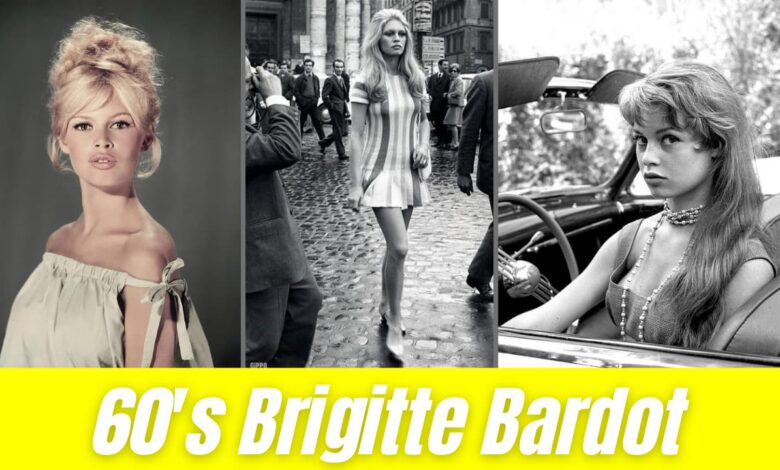60’s Brigitte Bardot

In the world of cinema and fashion, few figures have left as indelible a mark as Brigitte Bardot. A quintessential icon of the 1960s, Bardot’s influence extended far beyond the silver screen, permeating the realms of style, culture, and even political discourse. As we delve into the captivating life and legacy of 60’s Brigitte Bardot, we unravel the threads of a persona that captivated millions and continues to inspire generations.
The Rise of a Global Sensation
Brigitte Bardot emerged as a global sensation in the 1950s, but it was the 1960s that truly solidified her status as a cultural icon. With her distinctive blend of sensuality and innocence, Bardot epitomized the spirit of the era. Her breakthrough role in “And God Created Woman” (1956), directed by her then-husband Roger Vadim, catapulted her to international stardom. The film showcased Bardot’s magnetic presence and established her as a symbol of sexual liberation, a theme that would define much of her work during the 1960s.
Brigitte Bardot’s Impact on Fashion
The 1960s were a transformative period in fashion, and Brigitte Bardot was at the forefront of this revolution. Her effortless style, characterized by bardot necklines, wide-brimmed hats, and tousled hair, became synonymous with the chic, carefree spirit of the decade. Bardot’s influence extended beyond the big screen, as she became a muse for designers and a trendsetter for women worldwide. Her iconic looks, such as the classic gingham dress she wore in “La Vérité” (1960), continue to inspire fashion designers and enthusiasts today.
Cultural Impact and Symbolism
Brigitte Bardot was more than just a film star; she was a cultural phenomenon. Her image was a symbol of the changing attitudes towards sexuality and femininity in the 1960s. As a public figure, Bardot challenged the conventional norms of the time, embracing her sexuality and pushing the boundaries of what was considered acceptable. This boldness resonated with a generation seeking to break free from the constraints of the past. Bardot’s influence extended to music, art, and even politics, where her persona was often referenced as a symbol of rebellion and freedom.
Bardot’s Cinematic Mastery in the 1960s
The 1960s marked the peak of Brigitte Bardot’s film career, with a string of successful movies that showcased her versatility as an actress. Films like “Le Mépris” (1963), directed by Jean-Luc Godard, and “Viva Maria!” (1965), where she starred alongside Jeanne Moreau, highlighted her ability to transcend the ‘sex kitten’ image and take on more complex roles. Bardot’s performances during this period were lauded for their depth and authenticity, earning her critical acclaim and solidifying her place in cinematic history.
Brigitte Bardot: A Voice for Animal Rights
As her film career began to wane in the late 1960s, Brigitte Bardot turned her attention to a new passion—animal rights. In 1973, Bardot retired from acting and shifted her focus towards activism. She became a vocal advocate for animal welfare, using her celebrity status to raise awareness about issues such as animal testing, fur farming, and the mistreatment of animals in entertainment. Bardot’s dedication to this cause led to the establishment of the Brigitte Bardot Foundation in 1986, an organization committed to the protection of animals. Her work in this field has been widely recognized, and she remains a prominent figure in the fight for animal rights.
The Enduring Legacy of 60’s Brigitte Bardot
Even decades after her retirement from the entertainment industry, Brigitte Bardot‘s legacy continues to thrive. She is remembered not only for her contributions to film and fashion but also for her bold personality and unwavering commitment to her beliefs. Bardot’s influence on popular culture is undeniable, with countless references to her style, persona, and activism appearing in contemporary media. Her life and career serve as a testament to the power of individuality and the impact one person can have on the world.
Brigitte Bardot’s story is one of transformation, from a young actress navigating the complexities of fame to a powerful advocate for change. The 1960s were a pivotal time in her life, a decade that shaped her into the icon we remember today. As we reflect on her legacy, we are reminded of the importance of staying true to oneself and the enduring power of influence.




